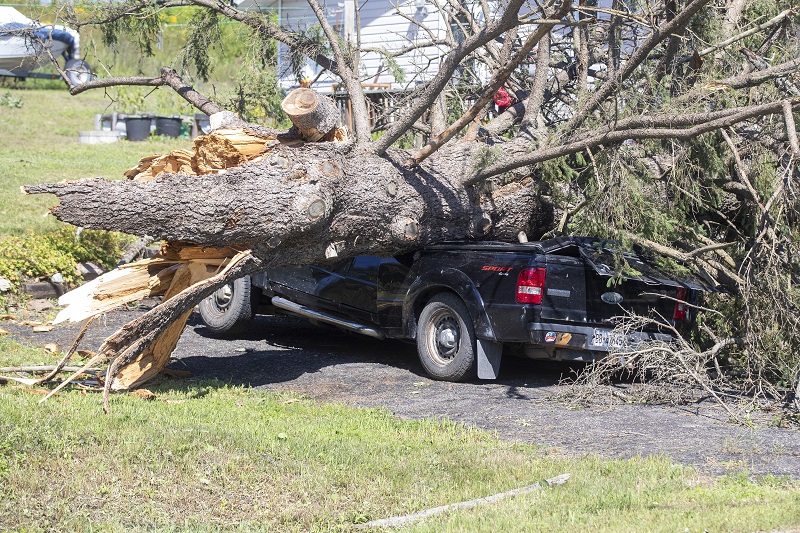Is Canada seeing more tornadoes every year?

Canada saw 117 recorded tornadoes across the country during the 2022 season, tying 2021 for the highest-ever single season on record, according to the Northern Tornadoes Project (NTP).
As with 2021, 29 of the tornadoes reached up to EF2 on the Enhanced Fujita scale, meaning winds of approximately 180 km/h to 220 km/h. Ninety-four downbursts (which can also produce damaging winds) were identified, with some reaching EF2 intensity.
“The researchers noted that, fortunately, none of the investigated damage in 2022 was rated above EF2,” said a Feb. 9 press release from NTP, founded at Western University in London, Ont.
In 2019, NTP confirmed 72 tornadoes, increasing to 103 in 2020 and 117 in both 2021 and 2022. Does this show a pattern of an increasing number of tornadoes in Canada?
Yes and no, said Glenn McGillivray, managing director of the Institute for Catastrophic Loss Reduction (ICLR).
“This indicates that there are more tornadoes that we know of, but not necessarily a trend towards more tornadoes overall,” McGillivray told Canadian Underwriter Tuesday. “There is a strong population bias with tornadoes.
“If you look for them, you will find them,” he said. “NTP is seeking to find every tornado that occurs in Canada to get a proper tornado climatology for the country, often by using technology like drones to find tornadoes that would otherwise go unreported.”
The debris from a building in an adjacent lumber yard is pictured in an image made using a drone in a neighbourhood in Hammond, Ont., on Thursday, May 26, 2022. A major storm hit parts of Ontario and Quebec on Saturday, May 21, 2022, killing 11 people and leaving extensive damage to infrastructure, homes, and business. THE CANADIAN PRESS/Sean Kilpatrick
Of the 117 verified tornadoes across Canada last year, 80 (or 69%) were confirmed only through NTP investigations. In 2022, NTP conducted 447 severe weather investigations, including 392 high-resolution satellite imagery surveys, 12 aircraft surveys, 30 drone surveys and 34 ground surveys. Researchers are constantly analyzing and updating severe weather data, meaning more tornadoes and downbursts may be discovered over time.
“We’re getting closer to the 150 or so tornadoes that we projected for our national annual average based on statistical analysis, so it appears the number of ‘missing tornadoes’ in Canada is gradually dropping due to the continually improving efforts of NTP,” said NTP executive director David Sills.
McGillivray said there tends to be (understandably) little interest by the media if a tornado doesn’t strike a community. That said, there was a very long-track tornado on July 24, 2022 that stayed on the ground for almost 56 km, he said. The EF2, with wind speeds of up to 190 km/h, hit the Ontario communities of Rockdale to Actinolite (just north of Tweed), causing extensive damage – particularly to trees.
2022 saw “near normal” weather patterns, with 39 confirmed tornadoes in the Prairies (Alberta, Saskatchewan and Manitoba) and 33 during the peak period of mid-June to mid-August. Ontario led the pack with 51 tornadoes, followed by 26 in Quebec and one in New Brunswick.
The most significant Canadian severe weather event last year was the spring derecho, which hit Ontario and Quebec on May 21, 2022. “Now considered one of the most deadly and costly thunderstorm events on record in Canada, 12 people lost their lives, at least 12 others were injured and more than $1 billion in insured losses has been recorded to date,” NTP said.
The derecho’s damage path extended more than 1,000 kilometres across Canada’s most densely populated region. Though NTP field teams were deployed shortly after the event occurred, it took the rest of the summer to fully investigate the storm. “The May 21 derecho was an extreme thunderstorm event that we will be studying for some time,” Sills said.
McGillivray said there is no evidence climate change is impacting the frequency or severity of tornadoes. “But there is research indicating that where tornadoes are occurring is changing, at least in the U.S., ” he said. Some researchers indicate a shift away from the Great Plains and more to the northeast, while other research says more to the southwest. “Also, there is thinking that while there may actually be fewer tornado days, there may be more days with multiple events (i.e. more outbreaks).”
ICLR continues to press for high-wind requirements to be included in the construction of new homes in Canada, including the inclusion of hurricane straps or their equivalent. The July 2021 EF2 tornado in Barrie, Ontario renewed the push. ICLR worked with the City of Barrie to submit a wind resilience code change package to the Ontario government, “which is being reviewed right now,” McGillivray said.
Feature image: A crushed vehicle from a fallen tree from the aftermath of a possible tornado is shown in Tweed, Ont., on Monday, July 25, 2022. THE CANADIAN PRESS/Lars Hagberg







